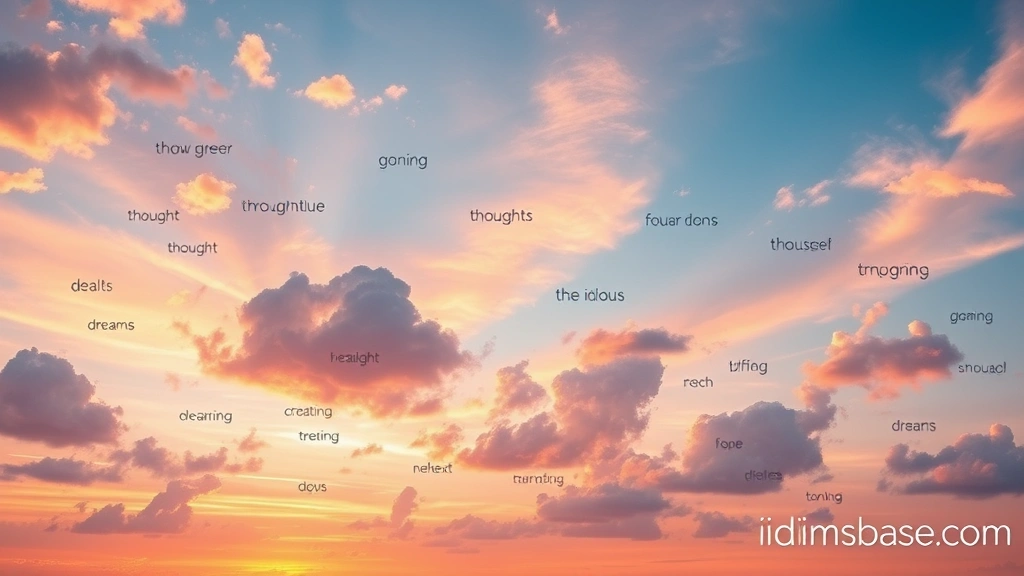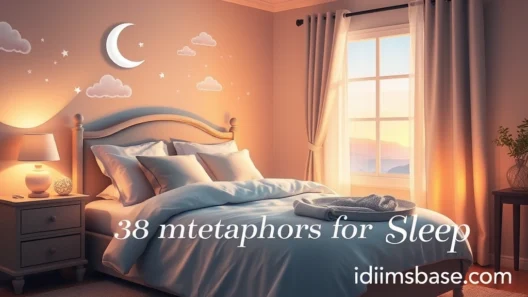Have you ever gazed up at the vast expanse above and felt a sense of wonder? The sky, that endless canvas stretching above us, has captivated humanity since the dawn of time. It's more than just atmosphere; it's a source of inspiration, a mirror of our moods, and a boundless stage for nature's most spectacular shows. But how do we truly capture its essence in words? That's where metaphors come in!
Metaphors are like magic wands for language, allowing us to paint vivid pictures and evoke deep feelings by comparing one thing to another in a non-literal way. They help us see the familiar in a new light, adding layers of meaning and beauty to our descriptions. And when it comes to the sky, oh, the possibilities are limitless!
Join us on a delightful journey as we explore 38 captivating metaphors for the sky. You'll discover new ways to describe its ever-changing moods and magnificent presence, whether you're a writer, a poet, or just someone who loves to look up. Get ready to elevate your vocabulary and your appreciation for that beautiful blue (or gray, or fiery orange!) dome above!
The Sky as a Canvas or Screen
Imagine the sky as an artist's workspace, constantly being painted and repainted.
- Nature's Masterpiece: The sky is always showcasing breathtaking art.
- A Cosmic Canvas: With clouds as brushstrokes and sunlight as paint.
- The World's Largest Projector Screen: Displaying sunrises, sunsets, and stars.
- God's Own Mural: Painted fresh each day with divine colors.
- An Ever-Changing Tapestry: Woven with threads of light and shadow.
- A Celestial Stage: Where the sun, moon, and stars perform their daily ballet.
The Sky as a Garment or Covering
Think of the sky as something that wraps around the world, protecting or hiding it.
- The Earth's Blue Blanket: Cozy and comforting, especially on a clear day.
- A Velvety Cloak of Night: Draped with glistening jewels (stars).
- A Silken Veil: Sometimes thin and translucent, sometimes thick and opaque.
- The World's Roof: Providing shelter and a sense of enclosure.
- A Canopy of Azure: Offering shade and beauty.
- A Cosmic Dome: Encompassing everything beneath it.
The Sky as a Mood or Emotion
The sky often reflects our feelings or sets the tone for the day.
- A Weeping Giant: When rain pours down, it feels like the sky is crying.
- A Grumpy Gray Face: On a stormy, overcast day.
- A Blushing Bride: During a soft, rosy sunrise or sunset.
- A Peaceful Blue Ocean: Calm and serene on a clear day.
- A Fiery Temper: When thunderstorms rage with lightning and thunder.
- A Dreamy Haze: On a foggy or misty morning.
The Sky as a Vast Expanse or Container
Consider the sky as an enormous space that holds many things.

- An Endless Void: Stretching into infinity.
- The Upper Chamber: A grand room above the world.
- A Bottomless Well of Blue: Seemingly without end or depth.
- A Great Glass Bowl: Inverted over the Earth, clear and fragile.
- The Universe's Window: Peeking into what lies beyond.
- A Giant Receptacle: Holding clouds, birds, and dreams.
The Sky as a Mirror or Reflection
The sky can often seem to reflect what's happening below or within us.
- The Earth's Mirror: Reflecting our moods and the world's beauty.
- A Crystal Ball: Hinting at the weather to come.
- A Photographer's Lens: Capturing and framing the world below.
- A Silent Observer: Watching over everything.
- A Giant Eye: Gazing down on humanity.
The Sky as a Living Entity or Being
Sometimes, the sky feels like it has a life of its own.
- A Gentle Giant: Towering above us, yet often kind.
- A Breathing Entity: Its colors shifting like a living creature.
- The World's Heartbeat: Pulsing with light and energy.
- A Divine Presence: Majestic and awe-inspiring.
- A Celestial Shepherd: Guiding the sun, moon, and stars.

The Sky as a Boundary or Limit
The sky can also represent a barrier or the extent of our world.
- The Edge of the World: Where the known meets the unknown.
- A Heavenly Ceiling: The limit of our earthly reach.
- The Ultimate Horizon: Always just out of reach.
- A Sacred Barrier: Separating the earthly from the divine.
Key Takeaways
- Metaphors are powerful literary tools that help us describe the sky in imaginative and evocative ways.
- Thinking of the sky as a canvas, a garment, a mood, or a living entity opens up new descriptive possibilities.
- Using these metaphors can add depth, emotion, and originality to your writing and everyday conversations.
- The sky's ever-changing nature makes it a rich source for endless metaphorical inspiration.
Frequently Asked Questions
What is a metaphor?

A metaphor is a figure of speech that directly compares two unlike things without using "like" or "as." It states that one thing is another, even though it's not literally true. For example, "The sky is a canvas" means the sky is a canvas, not just that it's like a canvas. The goal is to create a stronger, more vivid image or idea in the reader's mind.
Why are metaphors important in writing?
Metaphors are incredibly important because they enrich language, make writing more vivid, and help readers understand complex ideas or emotions more easily. They can:
- Add imagery: They paint mental pictures, making descriptions more engaging.
- Evoke emotion: They can convey feelings and moods effectively.
- Create connections: They link abstract concepts to concrete experiences.
- Make writing memorable: Unique comparisons stick in the reader's mind.
- Show, don't tell: Instead of just saying "the sky was beautiful," a metaphor like "The sky was a blushing bride" shows how it was beautiful.
How can I come up with my own metaphors for the sky?
Coming up with your own metaphors is a fun and creative process! Here are a few tips:
- Observe closely: Spend time looking at the sky. What colors do you see? What shapes do the clouds make? How does the light change?
- Think about your senses: How does the sky feel? Does it look soft, hard, vast, cozy, intimidating?
- Consider its actions: What does the sky do? Does it weep, frown, smile, embrace, open, close?
- Brainstorm categories: Think about different types of objects or concepts (e.g., clothing, art, emotions, animals, containers) and see if any qualities match the sky.
- Ask "What else is like this?": If the sky looks peaceful, what else is peaceful? An ocean? A sleeping baby?
- Play with contrasts: Sometimes comparing the sky to something very different can create a striking metaphor.
- Don't be afraid to be silly: The most creative ideas often start with playful exploration.
Can metaphors be overused?
Yes, like any literary device, metaphors can be overused or used poorly. If every sentence contains a metaphor, the writing can become cluttered and difficult to understand. Also, clichés (overused metaphors like "the sky is crying") can make your writing sound unoriginal. The key is to use them thoughtfully and strategically, making sure they add value and surprise the reader in a good way. Aim for originality and impact!
What's the difference between a metaphor and a simile?
This is a great question! Both metaphors and similes are figures of speech that compare two different things. The main difference lies in how they make the comparison:
- Metaphor: States that one thing is another. It creates a direct, implied comparison.
- Example: "The sky is a giant eye."
- Simile: Compares two things using "like" or "as." It states that one thing is like or as another.
- Example: "The sky is like a giant eye."
Metaphors tend to be more forceful and often create a deeper sense of identification between the two things being compared. Similes are more explicit and gentler in their comparison. Both are valuable tools for writers!
How can using metaphors improve my everyday conversations?
Using metaphors in everyday conversations can make you a more engaging and memorable communicator! They allow you to:
- Explain complex ideas simply: By comparing something abstract to something concrete, you can make it easier for others to grasp.
- Add humor and wit: Clever metaphors can be very funny and show off your creative thinking.
- Express emotions more vividly: Instead of just saying "I'm sad," you might say "My heart feels like a lead balloon."
- Make your speech more persuasive: Vivid language is often more convincing.
- Show your personality: Your unique way of seeing the world through metaphors can shine through.
It's like adding sprinkles to your words – they just make everything a little more delightful and impactful! So go ahead, experiment with these metaphors and see how they can transform your descriptions of the sky and beyond. The world is your oyster, and the sky, well, it's whatever you want it to be!






